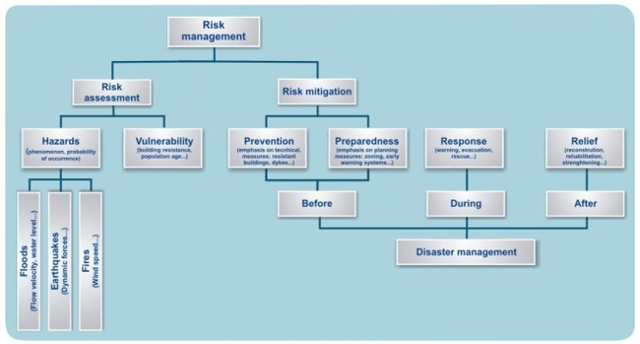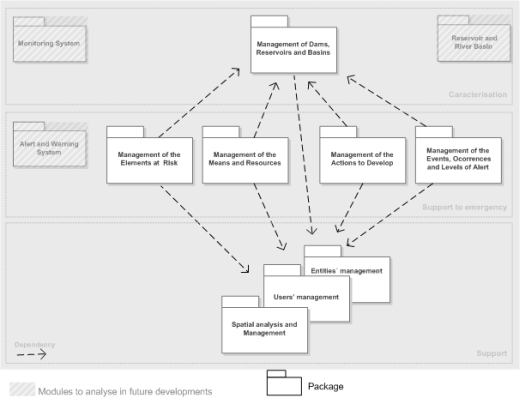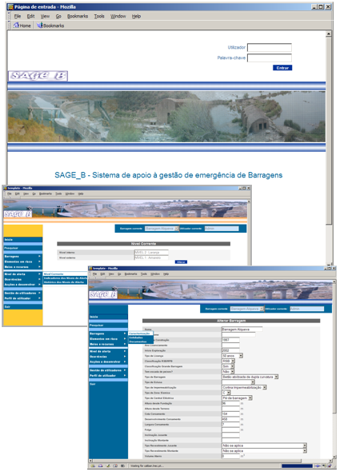Flood risk management for dam-induced accidents (source: Viseu, 2006)
Alert and warning systems, emergency planning and response simulation are three non-structural measures that contribute to risk mitigation.
A support system for dam-induced emergency management aims to:
make available all relevant information to prepare in advance the emergency response to dam-induced hazards, in particular emergency plans;
enable the simulation of the emergency response, that includes resource allocation and procedure modelling, to mitigate the hazard effects;
contribute to personnel training, namely civil defence agents who are responsible for implementing emergency response actions.
MethodologyThe complexity of the emergency response process and the system dynamics, associated to the volume of data to manage, suggest the use of information technology to suuport dam-induced emergency management
This means that an information system and its database are very important components of disaster management support tools, although an emergency response system is more than data storage. Such a system must also include a set of functionalities to manage all data included in an emergency plan, as well as a set of functionalities to analyse and process all data generated in a simulation drill. This way it will provide an important tool for training the intervening personnel.
The set of data to be included in the information system under development, called SAGE_B, refers to:
- characterisation of the elements at risk - people, buildings and other technological infrastructures, economic activities, public services, etc., that may be affected by a hazard;
- available material resources to face the catastrophe – transport vehicles, goods and industrial equipments, available lodging facilities to shelter displaced people, hospitals;
- human resources to be requested in order to build support teams;
- failure scenarios – a set of conditions that will define the seriousness of disaster and risk maps for each scenario or, at least, for the extreme scenario;
- hierarchy and command chain;
- all response procedures and actions.
Support system for dam-induced emergency management
The database technology enables the characterisation of these data through a set of alphanumeric attributes and a set of geo-referenced attributes.
The response computational simulations, in particular those that allow modelling the coordination and the evacuation processes as well as the support to displaced people are only possible due to the advances of the last decade in such areas as Computer Science and Geographic Information Systems (GIS), and in the methodologies for integrating different kinds of models, such as mathematical models, rule-based models and Multi-Agent Systems (MAS).
The system potential users, dam owner and civil defence agents, although geographically deployed, shall be able to have access to an adequate, user-friendly and intensely used interface. The SAGE-B system is being implemented as a Web-service to be used through a browser. This Internet-based technology supports authentication and access controls, a critical functionality.
Publications- SANTOS, M. A.; GONÇALVES, A.; SERRANO, H. (2005) - Sobre um Sistema de Informação para Apoio à Gestão de Emergências Provocadas por Cheias Induzidas (On a Flood Emergency Management Support System). Paper presented at the 7th SILUSBA, Évora, Portugal, May 30, 2005.
- SERRANO, H. (2005) – Sistema de Apoio à Gestão de Emergências do Aproveitamento do Alqueva (Alqueva Dam Emergency Management Support System). Project report concerning a research training held at LNEC, July 2005.
Research TeamMaria Alzira Santos, Principal Research Officer
João Palha Fernandes, Research Trainee
António Gonçalves, LNEC Fellow
Teresa Viseu, Research Trainee
 Hydraulics and Environment Department
Hydraulics and Environment Department







